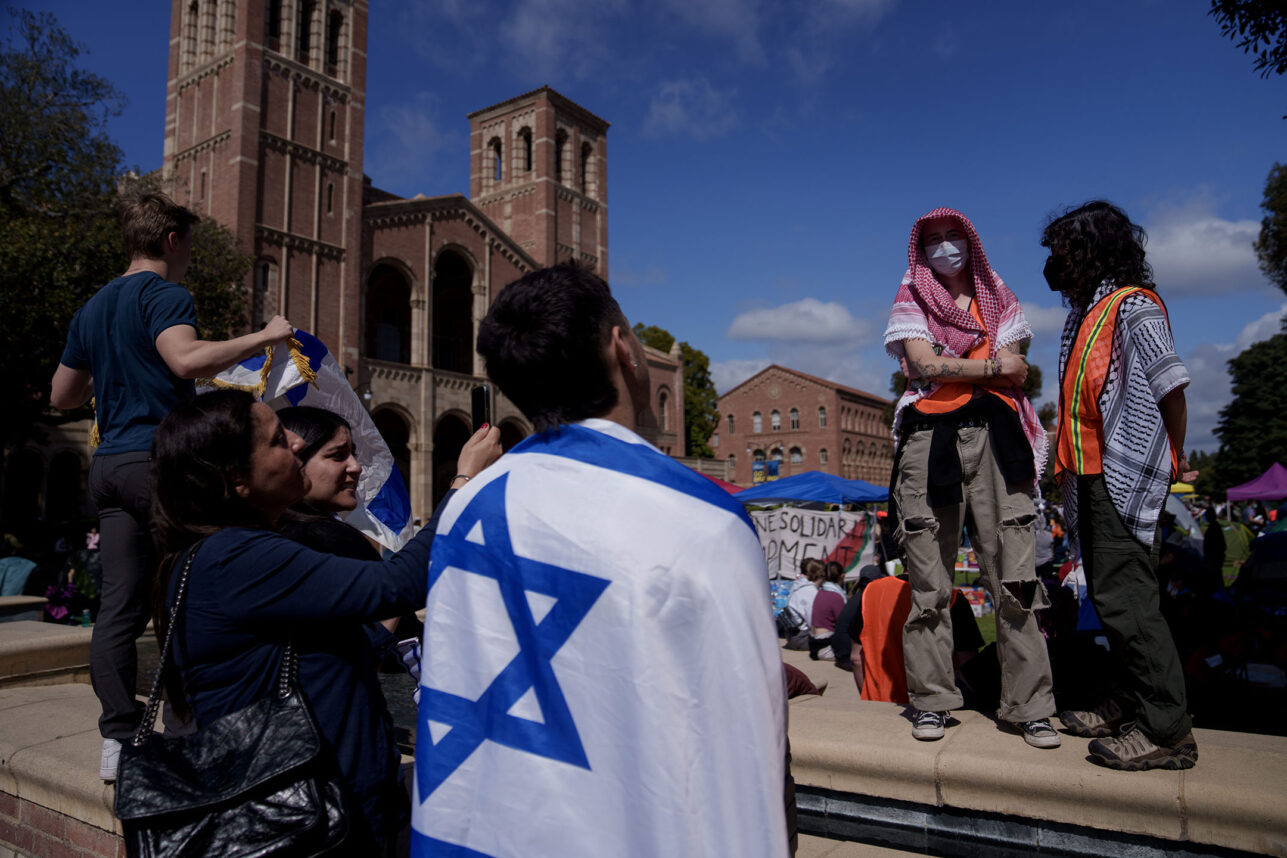Earlier this month, visitors to the Grand Hyatt in New York City might have spotted an unusually stern warning sign on one wall: “The hair of a woman is considered ervah.” Lewd, shameful, naked, unchaste. This inscription, from the Babylonian Talmud, was part of a photographic exhibit by the artist Na’ama Batya Lewin, on display on the occasion of the fourth international conference of the Jewish Orthodox Feminist Alliance (JOFA), Nov. 9-11.
In characteristic Talmudic dialectic, Lewin’s exhibit presented an alternative interpretation of the ancient verse, summed up in the exhibit’s title, “Ervah: Hidden Sensuality.” The photographs show Lewin visiting modern and ultra-orthodox communities around New York in all manner of head coverings: synthetic wigs, hats riding on top of wigs, schpitzlim (knit caps covered with twisted twine), even a long, luscious red sheitel (a wig) dramatically different from her own.
The JOFA conference brought together some 700 women and 300 men for a weekend of religious activism and scholarly lectures on the question of tzeniut, a mix of modesty and dignity, and other aspects of communal life, all gathered under the rubric “Discovering/Uncovering/Recovering Women in Judaism.” The group, most of whose members identify as modern Orthodox, pursues small victories — mother’s names on tombstones, bat mitzvahs for girls, more equitable synagogue seating plans — while also pressing for a feminist reworking of the entire 3,000-year-old patriarchy that is Orthodox Judaism.
Emotions were noticeably more raw at last year’s conference, where one speaker broke down in tears over whether she should encourage her daughter to wear tzizit (traditional fringed ritual garments reserved for men and boys). This time, participants made bolder assertions: “Just do it, and the rabbis will follow,” one woman said. Indeed, conference-goers heard talks by several prominent men — rabbis and scholars — who’ve found imaginative legal precedent in the Talmudic and rabbinic texts for still-controversial practices, like women’s prayer groups and mixed-gender public prayer.
But many men have not followed. Consider the comments of a highly regarded doctor and father of five daughters who attended the conference with his wife. “Look, let’s face it, women are a complete distraction in shul,” he said to me.
“What are you going to do, lay someone on the bimah?” his wife shot back, referring to the platform at the front of the synagogue. “Control yourself, like at work.”
He responded, “I can get a lot of work done while looking down a women’s shirt. Davening [praying] is different.”
Dr. Tova Hartman-Halbertal, a lecturer at Hebrew University’s School of Education and author of “Appropriately Subversive: Modern Mothers in Traditional Religions” (Harvard University Press, 2003), is one woman who is trying to make things even more different. She’s one of the founders of Shira Hadasha, a new, inclusive Orthodox synagogue in Jerusalem where women have leadership roles in services, which begin only after 10 women, in addition to the traditional 10 men, have gathered.
The most dramatic moment of the conference came during Hartman-Halbertal’s hour-long talk, which challenged one of the biggest sources of Orthodoxy’s neofeminist pride: the modesty of women. Rather than offering an alternative to secular Western culture’s objectification of women, she said, Orthodox practices effectively “cover women with spiritual and psychic anxiety not their own.”
She told the story of a young male teacher at an Orthodox girls’ high school who placed a bowl of buttery rugelach on the table before the evening lesson. At the end of the lesson, he said dramatically, “Remember how distracted you were by those rugelach? That is exactly how I feel when you do not dress tzanua.”
This parable — likening girls to pastry — caused a commotion, as whispered conversations erupted across the room. At the end of her talk, part of the audience gave Hartman-Halbertal a standing ovation.
I approached Rabbi Daniel Sperber, the head of Judaic schools of higher learning and professor of Talmudic research at Tel Aviv’s Bar-Ilan University, who is sympathetic to fuller participation of women in ritual life. “She used big words,” he said, a bit cagily. “When you exaggerate so much, you produce a caricature and it begins to sound like demagoguery.” But judging from the hallway talk, many listeners understood Hartman-Halbertal’s point: Much of tzeniut, as it is currently practiced, is a recapitulation of the same hypersexualization of both men and women, at the expense of their human dignity, that Orthodoxy condemns in mainstream culture.
So why do feminist Orthodox women — and men — endure the pain and stay in the fold? The answer may lie as much in fundamental identity as in the richness of communal life and religious belief itself. For JOFA, change is difficult but possible; in fact, adaptability may be the secret strength that has preserved tradition for thousands of years.
“I come to this from a place of choice,” said Cherie Koller-Fox, a Conservative rabbi from Boston who supports JOFA. “I am not so angry. Besides, no one ever called me a rugelach.”
Tamar Miller is former executive director of the Institute for Social and Economic Policy at Harvard University.





















 More news and opinions than at a Shabbat dinner, right in your inbox.
More news and opinions than at a Shabbat dinner, right in your inbox.